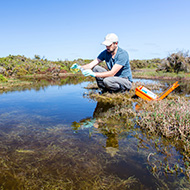BEVA publishes resources for anthelmintic use
BEVA believes that an inadvertent over-use of dewormers has contributed to the spread of resistance.
The British Equine Veterinary Association (BEVA) has published anthelmintic resources for equine practices, as part of its work to tackle resistant parasites.
The resources include an expert review of all relevant literature, practical guidance on parasite control, a review of the environmental impact of anthelmintics, and a toolkit to support practices with anthelmintic usage.
A set of Primary Care Guidelines on equine parasite control have been published in the Equine Veterinary Journal (EVJ), which includes practical guidance.
The new guidelines encourage a more risk-based, diagnostic led approach to equine treatments. They also include a call for anthelmintics to be re-classified as POM-Vs.
BEVA’s Anthelmintic Working Group has also launched ‘ProtectMEtoo’, a toolkit to support equine practices with establishing practice policy on anthelmintic usage.
The practical toolkit includes guidance on real world risk assessments, clarity on the role of testing, and advice on deworming protocol, such as when to deworm and which anthelmintic to use. The advice is specific to foals, youngstock, donkeys, hybrids and adult horses.
The EVJ’s sister journal, Equine Veterinary Education, has published a new article which explores the ecological impact of anthelmintics.
BEVA’s collection of resources forms part of its campaign against the over-use of anthelmintics, such as dewormers.
The association says that resistance to dewormers is on the rise and no new products on the market. This could cause a resurgence of parasite-related clinical disease, as well as diminishing treatment options.
BEVA believes that an inadvertent over-use of dewormers has contributed to the spread of resistance. However, it says the practice has continued due to naivety and apathy among horse-owners, suitably qualified persons who dispense dewormers, and practitioners.
It hopes that introducing concise guidelines and explaining the importance of responsible usage will help retain dewormer efficacy, avoid unnecessary disease, and prevent loss of life.
David Rendle, who writes for the EVJ, said: “The overuse of anthelmintics has undoubtedly contributed to the alarming level of anthelmintic resistance against all classes of anthelmintic,
“As a profession, we must move away from routine anthelmintic treatments and fully embrace risk-based diagnostic-led treatment. We must accept that horses remain healthy with a tolerable number of internal parasites and, as such, healthy horses will have eggs in their faeces.”
Image © Shutterstock



 A set of international guidelines for disease surveillance in wildlife has been updated for the first time since 2015.
A set of international guidelines for disease surveillance in wildlife has been updated for the first time since 2015.